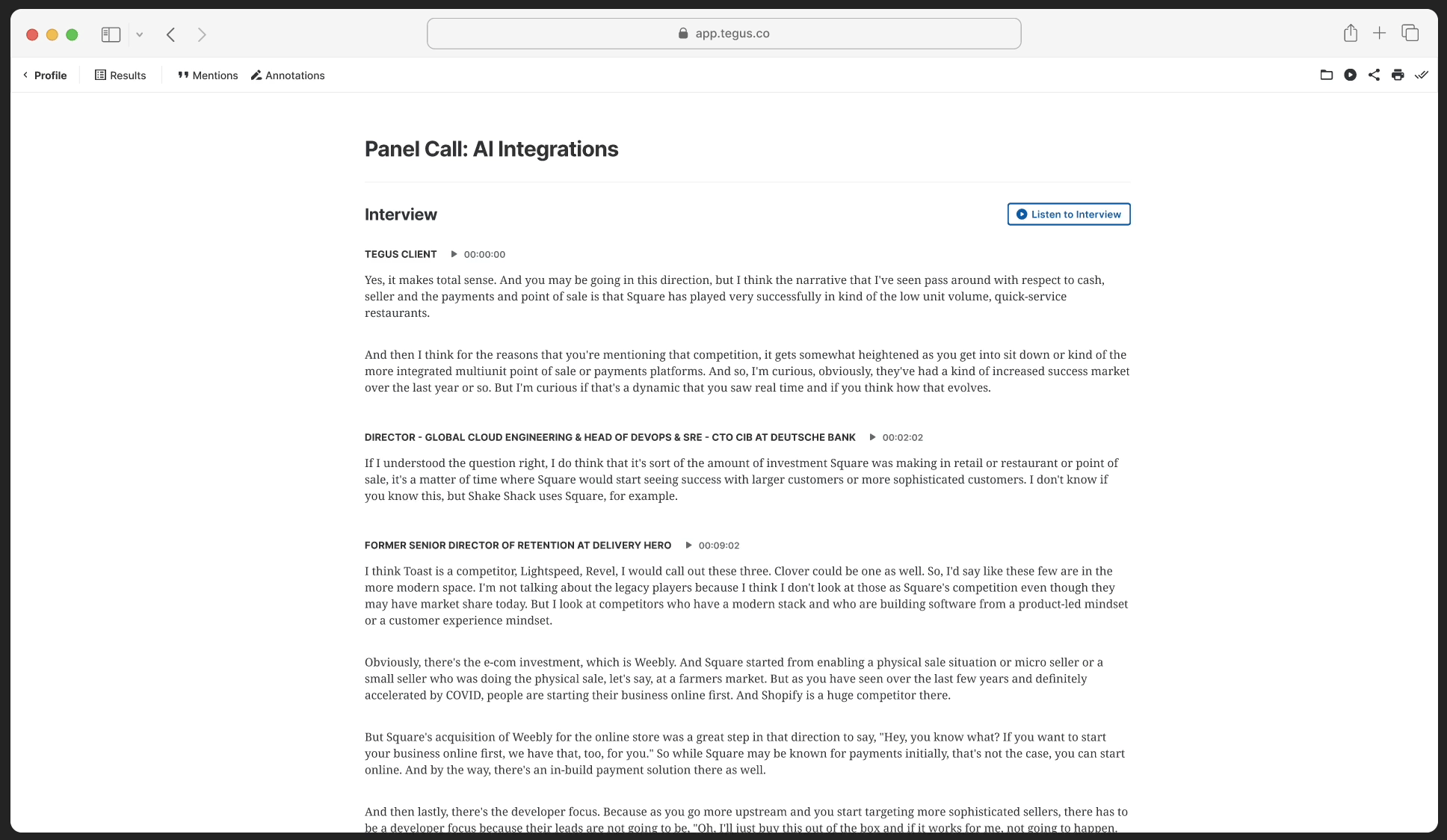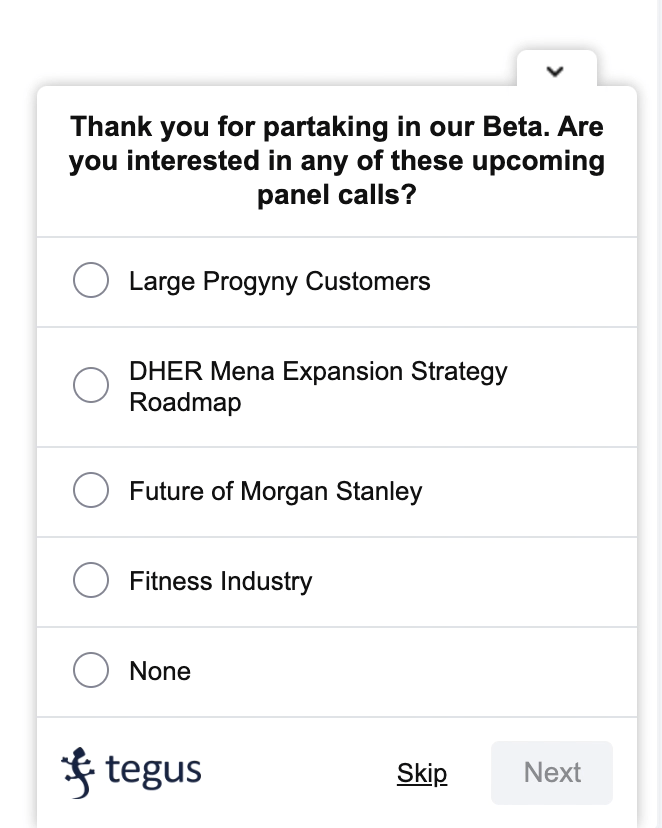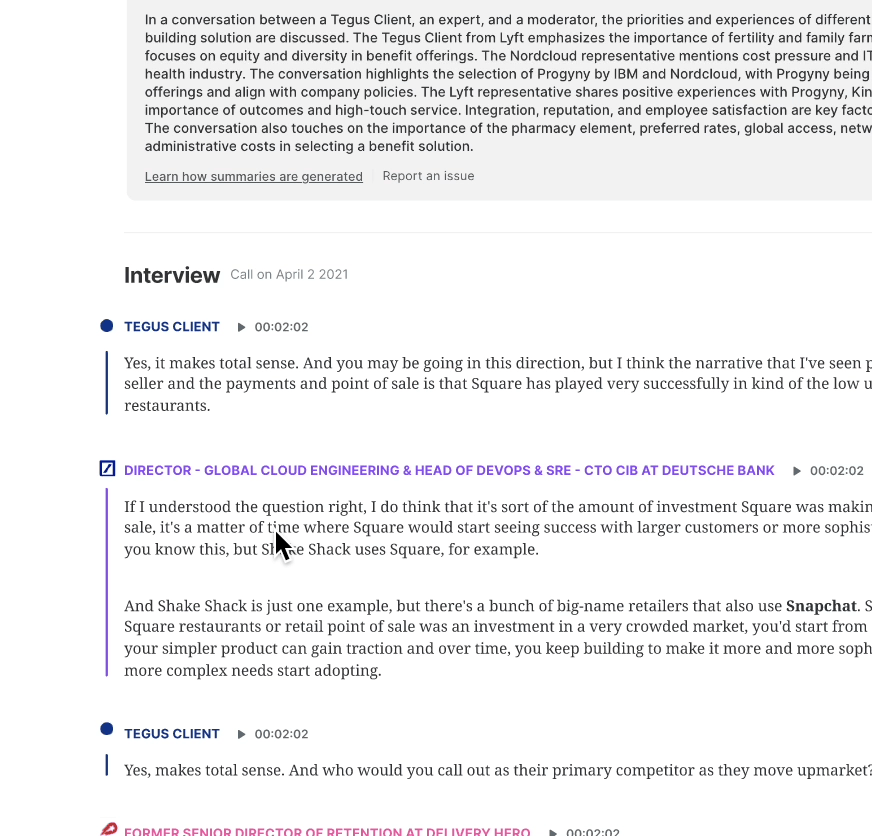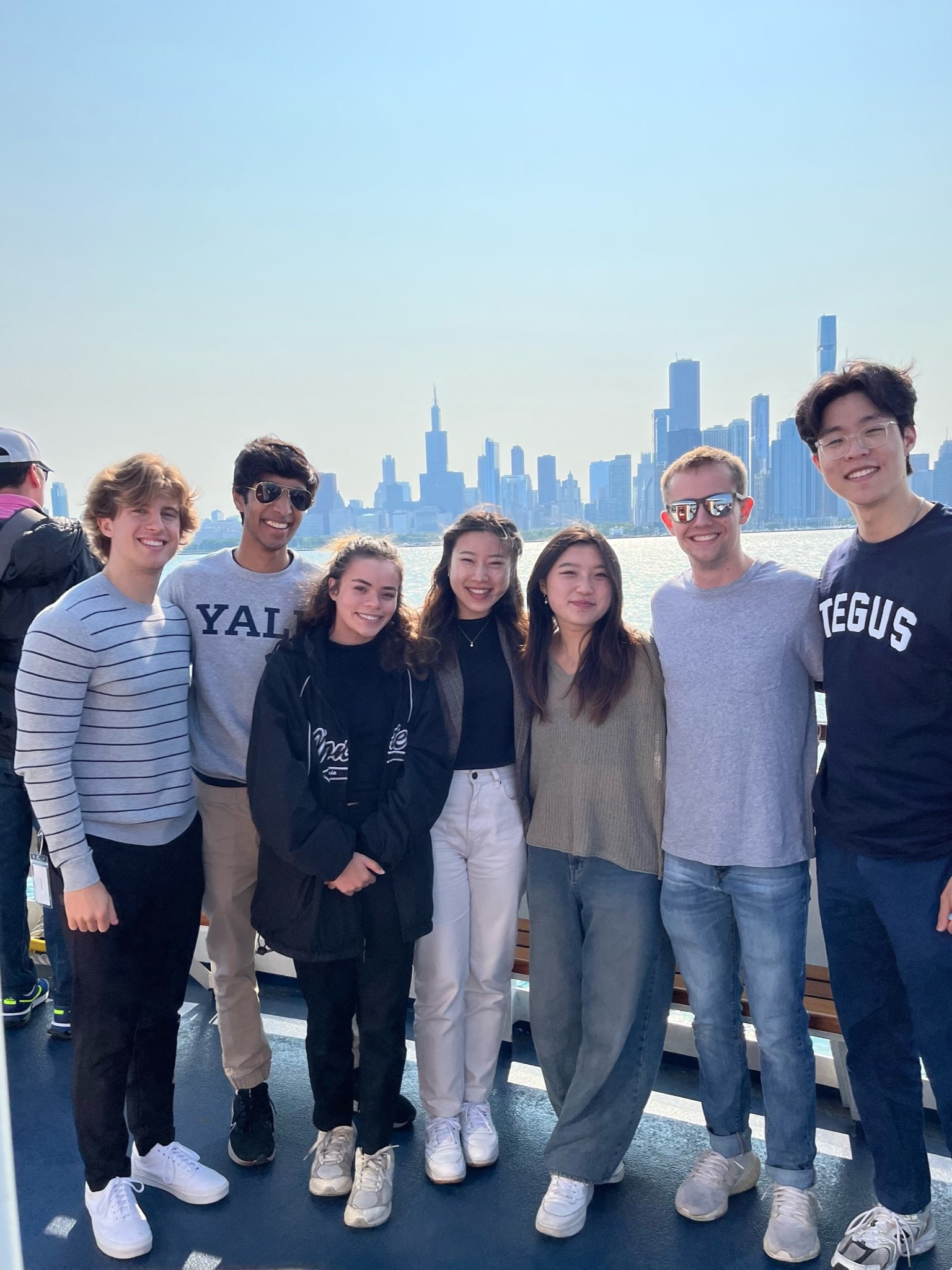
Streamlining investment research with Panel Calls
During the summer, I was a product design intern at Tegus, within the New Content & Engagement team where I improved the panel call transcript experience to expedite research for investors. I led the end-to-end design of panel calls as the sole designer for panel calls.
The project shipped in Q3 2023. See here →
TIMELINE
May 2023 - Aug 2023
ROLE
Product Design Intern
DISCIPLINE
Product Strategy
UX Research
UX Design
UI Design
TOOLS
Figma
Hotjar
Overview
CONTEXT
Expanding content offerings for the first time.
Tegus has only offered 1-on-1 expert calls, but is expanding its offerings to include panel calls. Panel calls aim to streamline the investment research process for investors, providing a diverse range of insights from multiple experts simultaneously.
The recently introduced beta version, accessible to 350+ users, was developed based on the existing 1-on-1 call format and process. However, this has revealed various challenges due to differences between panel calls and 1-on-1 calls, leading beta users to refrain from using panel calls.
MEASURING SUCCESS
Business Goals
Increase platform usage by enhancing user value
Increase panel call engagement
User Goals
Save time conducting research
Find value in panel calls
Success metrics:
Daily Active Users
User engagement (time spent on the platform)
Success metrics:
# of users reading panel call transcripts
Completion rate of transcripts
Success metrics:
Average research time spent before and after introducing panel calls
Success metrics:
User feedback on perceived value from panel calls
⚠️ THE PROBLEM ⚠️
Beta users are avoiding using panel calls due to two primary issues—one related to product strategy and the other to design.
01
Investors are unsure how to effectively use panel calls in their research.
02
Panel call transcripts are hard to follow and not easily digestible.
the extremely dense, lengthy, and undigestible panel call transcripts
👀 SOLUTION SNEAKPEAK 👀
Simplifying the Dense Transcripts
Visual breaks and important context that follow users while parsing the transcript ease the digestion of dense panel call transcripts.Easily Dive Deeper into Research
With research jumping points to quickly delve into relevant links from the panel call transcript, easily make panel calls the starting point for investment research.↓ ok… but how did I get here?? ↓Discover
IDENTIFYING OPPORTUNITIES
What areas of the current panel call process can be improved?
Given the initial broad scope to improve panel calls without a specific problem defined, I needed to scope down my project. I began by understanding the current panel call process and identifying potential opportunities for enhancement.
Current panel call process:
💬
Tegus decides on a panel call topic
🎙️
Tegus sources a panel moderator
👪
Tegus sources expert panelists
📞
Panel call happens
📄
Panel call transcript goes live on Tegus
EXPLORING OPPORTUNITIES
To ensure that I was tackling the correct issue, I used an Opportunity Solutions Tree to thoroughly explore all possible opportunities and solutions under the two overarching opportunities with the two main identified opportunities overarching the potential explorations.
OPPORTUNITY #1
Streamlining the process of organizing a panel call
Organizing panel calls is time-consuming and expensive for the business as everything from sourcing topics, panelists, and moderators is a manual process managed by Tegus’s Operation Team.
OPPORTUNITY #2
Improving user-friendliness of panel call transcripts
Panel call transcripts are difficult to digest as they are uploaded in the same format as 1:1 transcripts despite key differences.
Define
CONCEPT TESTING
But what do users really care about?
To determine what solutions users prioritize, I needed to put my exploratory concepts in front of them. To help users visualize these ideas, I designed several high-fidelity prototypes based on the concepts I had generated in my Opportunity Solutions Tree.
High-fidelity prototypes of potential explorations
Through user interviews and a pop-up Hotjar survey on the Tegus platform, I evaluated users' willingness to engage with the proposed concepts.
The Hotjar survey was presented to 350+ beta users, and I conducted 7 user interviews, involving 5 beta users and 2 non-beta users. During the user interviews, I shared high-fidelity prototypes of my designs and posed questions to gather insights on the explorations.
Slides from the user interviews
The Hotjar survey
SCOPING DOWN
The lack of user-friendliness in the current panel call transcripts leads current beta users to entirely avoid reading them.
In the concept tests, users were super enthusiastic about the new explorations but repeatedly emphasized that the existing method was a huge hindrance to being able to leverage panel calls. Therefore, my project narrowed its scope from improving panel calls as a whole to enhancing the panel call transcript experience.
INITIAL SCOPE
How might we improve panel call engagement?
NARROWED SCOPE
How might we improve the panel call transcript experience for investors to efficiently conduct research?
IDENTIFYING PAIN POINTS
So, what’s so wrong about the panel call transcript?
Reading customer feedback, conducting internal workshops, and synthesizing insights from user interviews, I identified pain points users have with the current panel call transcript experience.
PAIN POINT #1
Difficult to keep track of who is speaking
Lengthy and dense paragraphs make it challenging for users to consistently keep track of who is speaking, especially when juggling multiple speakers.
PAIN POINT #2
Forgetting key expert details
Understanding an expert's background and perspective is crucial for interpreting a panel call transcript, but it's easy to forget these details while reading through the transcripts.
PAIN POINT #3
Unsure how to integrate panel calls into research
The broader panel call topics leave users confused about how to start incorporating panel calls into their research process.
Prototype
TRANSCRIPT ITERATIONS
Iteration #1
Starting prototyping, I took the primary pain points users have regarding the transcript format that I identified and established two key goals for my designs.
Design goals:
💭
Ensure users remember the expert's background
🎤
Make it easy to track who is speaking
First iteration of panel call transcript design
🛑
A problem arose with this iteration in edge cases where a speaker’s paragraph got too long, it became challenging to keep track of who was speaking in the first place.
Iteration #2
The second iteration considers the edge case where one person talks in long paragraphs, causing users to no longer see the speaker's title.
Chosen panel call transcript design
✅
The updated visual indicators continue informing users of who is speaking, regardless of the paragraph's length. This approach is also more consistent with the updated visual legend, making it easier for users to associate the speaker with the panelist.
FLOATING BIO ITERATIONS
I designed various floating expert bios with different amounts of information on the component. I had to determine the ideal amount of information that would be informative, but not overwhelming.
Iterations of floating bio designs
✅
Option 2 struck the optimal middle ground, providing users with enough information about the expert without visually overwhelming them with too much detail.
Making investment research easy.
Final Designs
A more digestible panel call transcript.
Simplifying the dense and lengthy panel call transcripts to make panel calls easier to digest, helping
investors find key research insights faster and more efficiently.
↓ new features are numerically labeled
✨ Feature Highlights ✨
Visually differentiated speaker titles
Color-coded speaker titles, accompanied by lines that follow their transcribed speech and logos of the expert’s company, allow easy differentiation between speakers in the transcript.
Expert bios on hover
Hovering over speaker titles reveals the expert’s bio, helping users recall the expert’s information and provide context to the transcript's content.
Floating expert bios
Having expert bios float while scrolling consistently reminds investors of the expert’s context. The buttons to set up 1:1 calls with experts enable seamless, deeper dives into investment research.
Using panel calls as a starting point for research.
An expandable sidebar with a search bar and relevant jumping points from the panel call transcript allows investors
to seamlessly dive deeper into research, making panel calls an excellent starting point for investment research.
Reflection
Interning at Tegus was an amazing opportunity. Through Tegus, I've grown to love the complex challenges of B2B companies and gained a lot of knowledge about the fintech industry.
I’m super thankful for Tegus’s design team for all the feedback and mentoring, engineers for challenging me and pushing me to understand technicalities, product managers for keeping me in check, and my fellow interns for keeping me entertained.
WHAT I LEARNED
Never be afraid to learn more and ask questions
During my internship, constant questioning provided a deep understanding of Tegus as a business and a product, greatly aiding my design decisions with confidence and knowledge.
Designing when constant adaptation is essential
My project timeline constantly shifted during my internship due to new research, internal discussions, and business constraints. This experience provided genuine insights into navigating design in a business context, especially with a new feature lacking predefined goals or timelines from the product teams.
Next Project


























